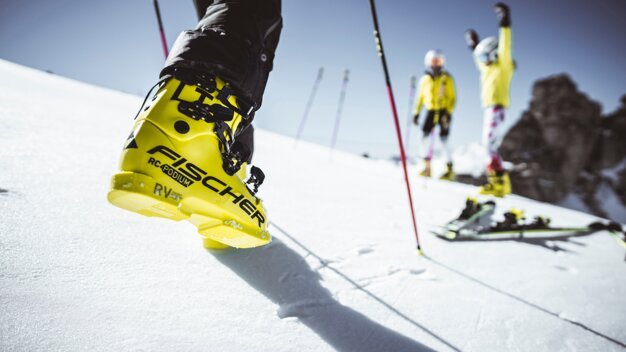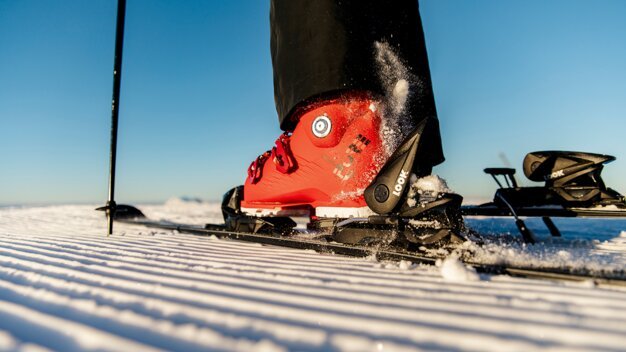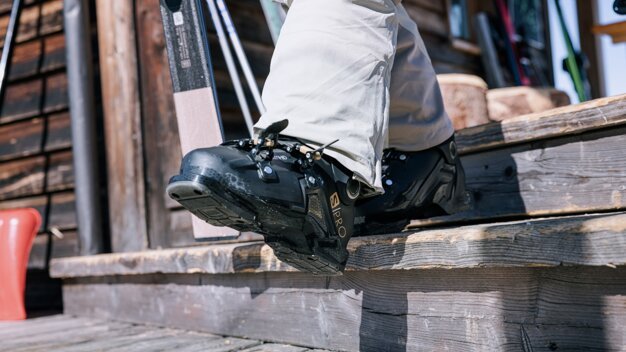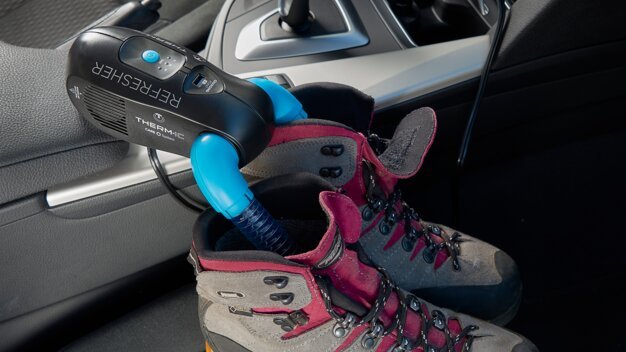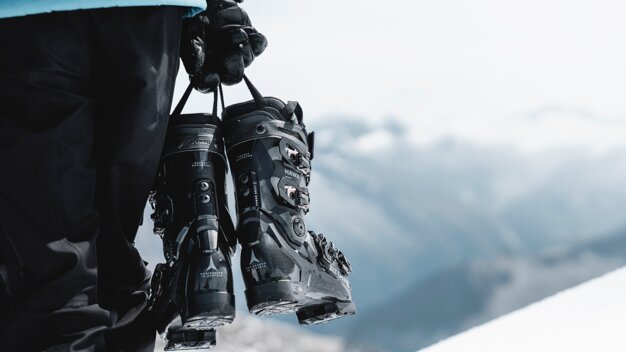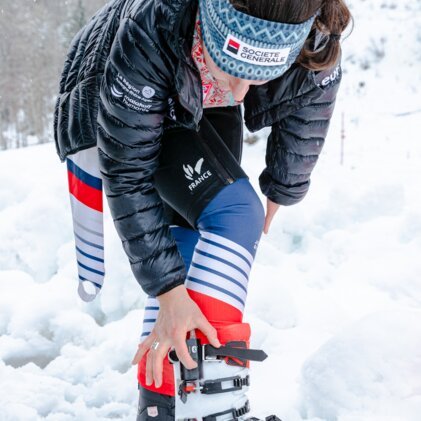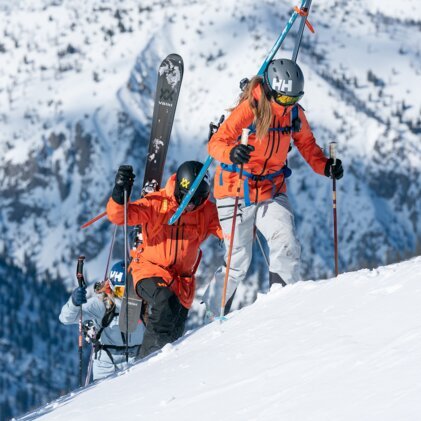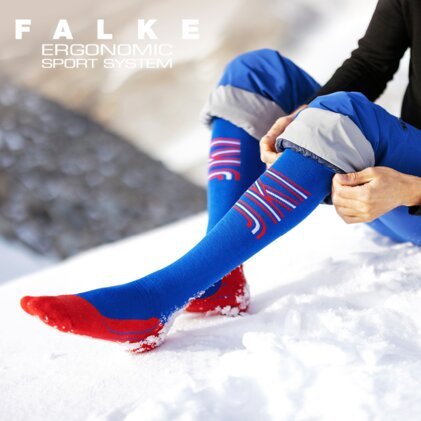
Imagine: it's a beautiful day in the mountains – with fresh snow and perfect skiing conditions. Your plan for tomorrow's skiing trip: repeat today's experience! But when you get ready for the slopes in the morning, you notice that the inner liners of your boots feel damp and you are hit by an unpleasant smell. Unfortunately, the most common reason for smelly ski boots is that they have not been dried properly.
In this article, we explain why they smell, how you can dry your ski boots and what advantages a boot dryer offers. We have summarised all the important information for you – just take a look at our A to Z guide on how to dry them properly!
Why do ski boots smell?
During a day of skiing, snow and water accumulate in ski boots. Adding to the moisture sweat also settles in the lining. While the outer shell serves to transfer power, it also reduces breathability. Bacteria love this warm, moist environment inside the inner boot, where they can multiply. They feed on the amino acids contained in sweat, which causes unpleasant odours to form. The whole thing is not exactly appetising, but the good news is that there is a simple solution to prevent the smell – dry your boots properly!
How do you dry your ski boots after skiing?
There are several ways to dry your ski boots properly:
- Hang them on a hot air rack
- Place them near a heat source (e.g. a radiator)
- Use a heated boot bag
- Stuff them with paper towels or newspaper
- Remove the inner boots and dry them in a well-ventilated place
- Use a portable hot air shoe dryer
Let's take a look at the different options below and then see how a shoe dryer works and what advantages it offers.
Drying instructions for ski boots
Before you start drying, there are a few steps you should take. We have put together a step-by-step guide below, in which we discuss the most common solutions.
Preparation:
- Remove the snow from the outer shell and dry it with a cloth.
- Take out the inner boot and the insole.
How to dry your ski boots
- Hot air rack: If you are on a winter holiday and staying in an apartment or hotel, there will probably be a ski cellar or room. Here you will usually find racks on which you can dry your boots with the toes pointing upwards. The hot air flowing through them ensures that the inner boots dry overnight.
- Heater: This works on a similar principle to the hot air rack. However, as a radiator gets much hotter than the method described above and temperature is more difficult to regulate, the ski boots should be placed at a certain distance from the radiator. Otherwise, you risk the material becoming deformed.
- Heated ski boot bag: This is a portable solution. It’s a small bag that can be plugged into a power socket and heats up the interior. An effective method for drying them at home or on holiday when nothing else is available.
- Newspaper: You can also stuff the inner boot with paper to help it dry. Form small balls and push them into the toe box. However, make sure to change them regularly, as air circulation is reduced and the paper can start to mould.
- Air drying: Keeping your ski boots in a well-ventilated basement can help them to dry. You can also air out the inner boots outdoors. Just ensure that the material is not exposed to direct sunlight.
- Portable hot air boot dryer: For homes or holidays where there are no hot air racks, hybrid options such as a hot air boot dryer are the solution. They are inserted into the boots and blow warm air into them until they are completely dry.
Many hotels and apartments advertise their storage facilities for skis and ski boots. If there are no drying facilities or if you are looking for an effective aid for your own home, portable solutions such as a ski boot bag or a hot air boot dryer are a good choice.
How do boot dryers work?
The idea behind portable ski boot dryers is simple: when connected to a power source, they emit hot air. High-quality models combine powerful ventilation with a heating element. This enables them to blow hot air into both tubes of the dryer, which optimises air circulation and speeds up the drying process of the inner lining. At the same time, the conditions necessary for bacteria to produce strong odours are eliminated.
The best thing about it is that you can easily take the dryer with you on any day trip or skiing holiday.
How do you use a ski boot dryer?
Depending on the model, the following steps are necessary when using the dryer:
- Plug in the gadget and switch it on.
- Set the time and temperature.
- Place the boots on the drying tubes or insert the boot dryer into the inner liners (depending on the model).
- Leave to dry for a few hours.
Tip: If you don't have much time, you can also remove the inner liners and dry them separately. This is usually quicker than drying the entire boot.
The advantages of a ski boot dryer
As we have already mentioned, ski boot dryers are very practical because they are portable and can be used almost anywhere. But that's not all! High-quality models offer many more advantages:
- They dry your ski boots in just a few hours
- They are easy to use
- Compact and quiet
- Prevent odours by stopping bacteria from growing inside the boots
- They reduce wear and tear
Good to know: Boot dryers help you optimise your performance on the slopes. How? Your body uses enormous amounts of energy to keep your feet warm – energy that cannot be used to maintain performance. Properly drying your boots overnight, not only will they regain their natural freshness but also ensure that your body is not wasting energy.
Can I use ski boot dryers for other types of shoes?
Ski boot dryers can be used for a wide range of shoes in a variety of sizes. They are ideal for ski or winter boots, trainers and all other types of shoes. They are also very handy for drying gloves!
Ski boot care
With the right care, you will not only enjoy better performance in the short term but also increase the lifespan of your equipment. You can use the following gadgets:
- Care and cleaning gels: For removing dirt without affecting the functionality of the material.
- Disinfectant sprays: To ensure that no odours can form in addition to drying.
- Boot dryers: To dry the inner lining in any situation.
- Insoles: With the right models, you can increase the comfort of your ski boots. They are also inexpensive to replace.
- Waterproofing spray: Special sprays ensure that the shell is better protected and future dirt is easier to remove.
If you need help choosing the right care products, our winter sports experts will be happy to advise you in one of our shops.
Frequently asked questions about drying ski boots
Should I dry my ski boots at the end of the season?
Absolutely! Before storing your ski boots for the summer break, ensure they are completely dry. Wipe off any dirt and store them in a dry place! This will prevent odours from developing and extend the life of the material.
What can I do about smelly ski boots?
Ski boots smell when odour-causing bacteria settle in the lining of the inner liners. Heat and moisture further exacerbate the smell. For this reason, it is important to dry them quickly. A boot dryer or special disinfectant spray also help to minimise the risk of odours.
Why do ski boots get wet inside?
The breathability of ski boots is impaired by their shell, which causes them to get wet inside. Sweaty feet, snow and water also cause the inner lining and plastic to become damp. This makes it all the more important to wear ski socks made of materials that absorb moisture from the skin and wick it away. Drying the inner boots properly at the end of a day's skiing ensures that it evaporates overnight and you can start the next day with dry feet.
Should ski boots be stored strapped on or open?
Ski boots should only be left open to dry for a short time. However, once they are completely dry – and especially at the end of the season – you should store all models with the buckles closed. This will prevent your ski boots from losing their shape over time and ensure they fit properly at the start of the next season. This applies to models for adults and children alike.
INTERSPORT Rent tip
The RENTertainer recommends
Even though a boot dryer extends the life of your ski boots, at some point it will be time for a new pair. Despite proper drying and subsequent storage, the material will eventually become brittle, which can change the fit and performance – the plastic becomes soft. If this is the case for you, we recommend our ski boot guide. Thanks to our ski boot rental service, you can test different models in advance.
Our experts will be happy to advise you in our INTERSPORT Rent shops. We analyse your feet and select the right products for your needs. If necessary, we can even make individual adjustments with a professional boot fitting.
